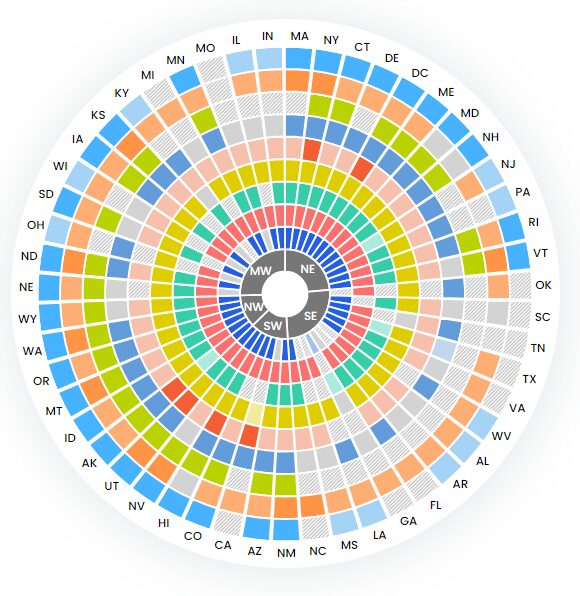
You walk into the exam room or emergency department, or you’re making the rounds for a physician. A patient utters the words you dread hearing:
“I want to see a doctor, not a physician assistant (PA).”
“I want to see a real doctor, not an assistant.”
“Is a PA-C as good as a doctor?”
“Why am I seeing a PA instead of a doctor?”
“Can I refuse to see a physician assistant?”
In some rural areas, a PA may be the only medical provider around for miles, so a physician may not be available, even if you wanted to refer to them.
Sometimes, there are several physicians on site, but they’ve sent you in their place. Either way, patient management as a PA can be difficult, especially when one questions your medical expertise and advice.
There are any number of reasons a patient may make the request to see a doctor instead of a PA, and it’s ultimately up to you to determine if you want to engage with the conversation further. Here are some of the strategies and talking points we’ve found to be effective.
(Are you an NP whose authority is being questioned? Have you had a patient say, “I want to see a doctor and not a nurse practitioner”? Read our sister article on advice for nurse practitioners here.)
PA vs MD: What’s the Difference?
The biggest difference between PAs and MDs is that PAs are not doctors. This difference is best displayed when complex issues are at hand, as an MD would have the skills, education, and experience to handle the complex issue that a PA does not have. Also, PAs are not allowed to perform surgeries, while doctors can. However, PAs often assist MDs in surgeries when necessary.
A PA’s education typically involves attending a two to three year PA program after obtaining a bachelor’s degree. This program provides a comprehensive overview of medical knowledge and patient care, equipping PAs with the skills needed to assist physicians in a variety of healthcare settings.
After earning a bachelor’s degree, doctors attend a four-year medical school where they delve deeper into the complexities of medicine. Following medical school, they undergo three to seven years of residency training, which allows them to specialize in a specific area of medicine and gain hands-on experience under the guidance of seasoned professionals.
How to Answer Common Patient Questions
Many physician assistants report that their authority is often questioned out of a misunderstanding of their responsibilities. Some patients assume that a PA is merely an assistant with no authority to take care of a patient without physician intervention.
While the scope of practice for PAs depends on the state—and no PA can legally operate with complete independence of a physician long-term—PAs can do much more than the average patient might suspect. Drawing attention to the fact that you are a trusted medical professional with many of the same privileges and responsibilities as a physician can be one route for anxious patients who mistakenly think they won’t be able to get the treatment they need from a PA.
Is a PA-C as Good as a Doctor?
Both PA-Cs and doctors have the authority to diagnose and treat patients, prescribe medication, order medical tests and interpret results, create treatment plans, and perform medical procedures, although this might be limited depending on which state a PA-C works in.
Are PAs Doctors?
PAs are not doctors, however both doctors and PAs play integral parts of the healthcare system. They each have distinct roles and responsibilities that are shaped by their educational and professional experience.
PAs and doctors have a slightly different scope of practice. A doctor has the ability to practice independently, while a PA must practice under the supervision of a physician. Also, PAs are not allowed to perform surgery on their own, however they are able to assist doctors and surgeries. Despite these differences, PAs and doctors often work together to develop treatments to ensure their patients receive the highest quality of care.
Is it OK to See a PA instead of a Doctor?
Yes, it is OK to see a PA instead of a doctor. While the scope of practice for PA can vary based on state regulations, they are generally authorized to diagnose and treat patients, much like a doctor would. This includes conducting physical exams, diagnosing illnesses, developing and managing treatment plans, and prescribing medications. Their extensive training and education equip them with the skills to handle a wide range of medical conditions.
It’s important to note that while PAs provide many of the same services as doctors, they do so as part of a collaborative healthcare team. This means that while they work independently, they also maintain a close working relationship with doctors, often consulting with them on complex cases or when specialized care is needed. This collaborative approach ensures that patients receive the highest level of care possible.
Why am I Seeing a PA instead of a Doctor?
PAs are able to do the majority of what a doctor does, without the MD having to be there. With their advanced education and clinical training, PAs are qualified to handle a multitude of tasks traditionally carried out by physicians. This shift of responsibility creates a more efficient healthcare system. It allows for a more streamlined patient care process, as PAs are able to take over a significant number of responsibilities that would typically be reserved for physicians. This not only lightens the workload of the physicians, allowing them to focus on more complex cases, but also reduces waiting times for patients.
The ‘A’ in PA Doesn’t Stand for Assistant (Anymore)
Many PAs report that patient disrespect comes from the title, physician assistant, which many in the field find to be reductive and not reflective of their responsibilities.
The good news: PA doesn’t officially stand for physician assistant anymore.
In 2021, the AAPA voted to change the title of the PA profession from “physician assistant” to “physician associate.” According to the AAPA, this change was made to better reflect the work PAs do, as their scope of practice is much broader than merely “assisting” doctors.
PAs are split fifty-fifty on whether they prefer to use the term “physician assistant” or “physician associate,” but advocates of “associate” say that it leads to less confusion with patients who are now less inclined to think of them as “merely an assistant.”
If a patient uses “assistant” in a derogatory manner, you may want to consider setting the record straight to hopefully lead to a more productive conversation about your role.
Physician Assistant (PA) Qualifications
If a patient has reservations about your qualifications, you can point out the training and experience required to serve as a physician assistant.
The training model for PAs very much mirrors that of physicians. The average length of a PA program is two years; the first year is similar to the first half of physician training, while the second year is comparable to a physician residency. Before they graduate, PAs are required to complete more than 2,000 hours of clinical training, alongside physicians, NPs, and other PAs. By the time a PA graduates, they are well versed in medicine and have accumulated an abundance of experience at the patient’s bedside.
Similar to NPs and physicians, PAs must also pass a lengthy certification exam after graduation. It should be explained to patients that not only must PAs graduate from a difficult program, but they must also pass a certification exam, as well as recertify every 10 years — far above and beyond what is required for “real doctors.”
In all three training models, physicians, NPs, and PAs must meet continuing medical education (CME) requirements every year. Most CME programs are attended by all three types of professionals, ensuring that NPs and PAs are not only trained similarly to physicians, but that they continue their education alongside them as well.
Understanding these similarities — in education, in certification, and in continuous training — will help ease any doubt patients have of your capabilities and understand that you are as much of a healthcare provider as any “real doctor.”
Can a Patient Refuse to see a Physician Assistant?
A patient reserves the right to choose their healthcare provider. However, PAs are typically empowered to carry out tasks similar to those of a doctor, depending on the regulations in each state. This includes conducting physical examinations, identifying diseases, formulating and overseeing treatment strategies, and prescribing medication.
A PA’s education and training provide them with the expertise to provide patients with the highest level of care. This facilitates a more efficient healthcare system, as PAs are increasingly taking over many duties traditionally reserved for doctors. This strategy not only eases the burden on physicians, enabling them to concentrate on more intricate cases, but also minimizes patient wait times.
What Do Doctors Think of Physician Assistants?
In a study from the National Library of Medicine, doctors from a wide range of specialties who directly work with PAs reported on their experience with PAs. The survey reported that the vast majority of doctors were pleased with the role PAs take on and believe that the addition of PAs to medical teams benefits both doctors and patients.
The study also reports that doctors believe that the current unregulated status of the profession impairs their ability to use their PA staff to their fullest potential, and strongly support statutory regulation for PAs to increase their scope of practice. This not only highlights the amount of trust doctors have in PAs, but emphasizes the importance of PAs in the healthcare system.
Editor’s Note: This blog was originally written in May 2023 by Sean Conroy, PA-C, and was updated in October 2024 by the Barton Team to reflect new information.
Looking for more educational physician assistant content? Check out our hub for physician assistant resources, or check out our popular guides on physician assistant licensing, PA scope of practice, PA job outlook, and physician assistant specialties. And be sure to explore our physician assistant salary guide.
Looking for your next dream assignment? View out our open physician assistant jobs.




